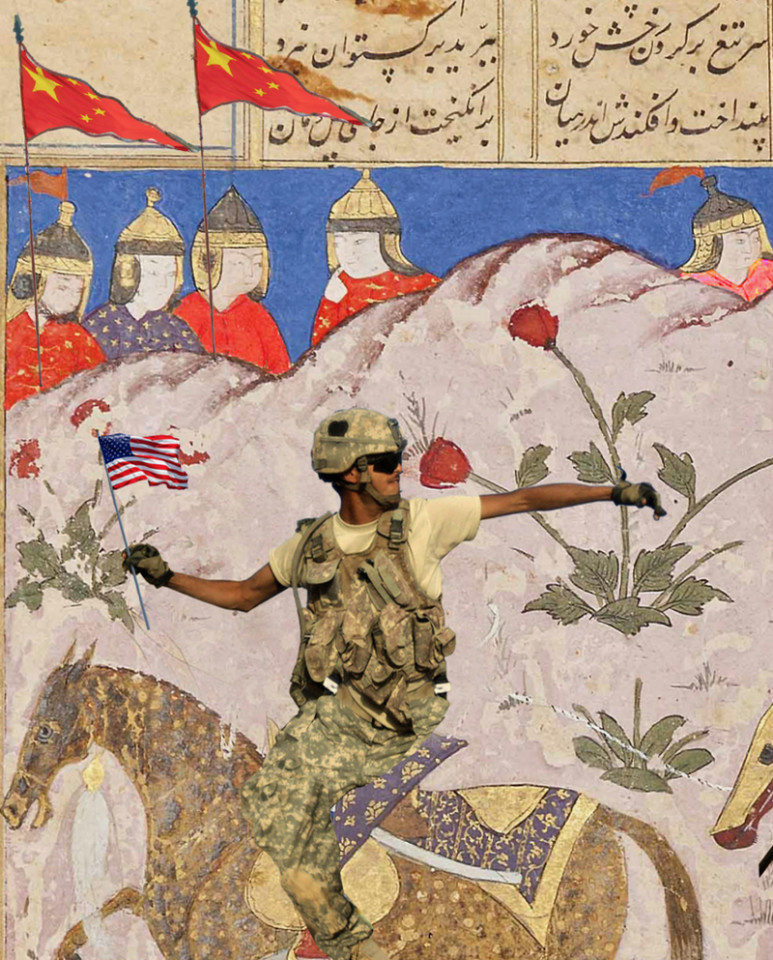Shadi Rezaei
Did Rustam Leave the Battle?, 2021
23ct Shell Gold, Rabbit skin glue and acrylic hand painted miniature on Hahnemühle William Turner paper
32 x 23.2 cm
12 5/8 x 9 1/8
12 5/8 x 9 1/8
Edition of 3 plus 2 AP
Copyright The Artist
Further images
A suite of four miniatures taken from the ancient epic poems Shahnameh, or Persian Book of the Kings introduce a further element of subversion. Rezaei has selected illustrations from specific...
A suite of four miniatures taken from the ancient epic poems Shahnameh, or Persian Book of the Kings introduce a further element of subversion. Rezaei has selected illustrations from specific accounts of Iran’s ancient history (at the time areas of modern day Afghanistan fell within the Persian Empire) that are relevant to the current political climate in the middle east. She has manipulated the images, both digitally and by hand, adding and removing elements thus altering the messages of the original works.
The renowned warrior Rustam, son of Zai and Rudaba, is here seen in battle whilst at war with the Chinese Khaqan. He has slain Kamos Keshani and defeated the much larger and better equipped enemy army. Given that, when this epic poem was written much of modern day Afghanistan was part of the Persian empire one can not help but draw comparisons between the figures depicted in the miniatures and current events in the region.
Rezaei has replaced two of the key figures on horseback with American soldiers, one holding a small Stars and Stripes flag, the other holding a machine gun. The onlookers, still wearing traditional dress, hold aloft Chinese flags and a pink balloon (a symbol of hope which is drifting out of anyone’s reach) floats beyond the border of the picture plane. The American soldiers appear to be leaving the scene, the dead bodies on the floor could be seen as ‘collateral damage’. The Americans have taken on the role of Rustam, the saviour of the people. But, they have left the battle too early allowing the Taliban to return and undo decades of progress.
The renowned warrior Rustam, son of Zai and Rudaba, is here seen in battle whilst at war with the Chinese Khaqan. He has slain Kamos Keshani and defeated the much larger and better equipped enemy army. Given that, when this epic poem was written much of modern day Afghanistan was part of the Persian empire one can not help but draw comparisons between the figures depicted in the miniatures and current events in the region.
Rezaei has replaced two of the key figures on horseback with American soldiers, one holding a small Stars and Stripes flag, the other holding a machine gun. The onlookers, still wearing traditional dress, hold aloft Chinese flags and a pink balloon (a symbol of hope which is drifting out of anyone’s reach) floats beyond the border of the picture plane. The American soldiers appear to be leaving the scene, the dead bodies on the floor could be seen as ‘collateral damage’. The Americans have taken on the role of Rustam, the saviour of the people. But, they have left the battle too early allowing the Taliban to return and undo decades of progress.





